Our dermatologist, Dr Liew, will be able to help you to select the most suitable treatment plan for your acne problems. You could be school aged or going into adulthood, having hormonal issues or wanting to address scarring and pigmentation.
Investigations may be carried out to rule out polycystic ovary syndrome in females who suffer from irregular painful menses, as it is one of the causes of resistant acne.
1. Topical antibiotics
2. Topical benzyl peroxide
3. Topical retinoid
4. Topical treatment to target spots and pigmentation
5. Oral antibiotics with topical
6. Oral retinoid with topical
7. Oral contraceptive pills
8. Cosmeceuticals selected for acne/oily skin to complement other medicated treatments
1. Hydradermabrasion procedure that simultaneously combines cleansing, exfoliation, extraction, hydration and antioxidant protection. Expected results are the improvement of appearance of fine lines, wrinkles, brown spots, oily and congested skin.
2. Lightening cream (hydroquinone or peptide or botanical range) to lighten pigmentation
3. Laser treatment to help even your skin tone and reduce redness on your skin
1. For shallow, depressed, and rolling scars; one can consider fractional CO2 laser or injections of fillers
2. For ice picks; one can consider skin surgery or application of trichloroacetic acid
Our dermatologist will go through all the options available and discuss the pros and cons of each option.
Corns and calluses, predominantly on the feet can be a nuisance, causing extreme discomfort. Reasons for this skin condition may be due to your walking gait, your activities, footwear, etc.
1. Topical treatment
2. Pairing +/- liquid nitrogen cryotherapy
Cysts and abscesses can occur spontaneously in any hair-bearing body sites from scalp to genital. It can be sudden with pain, swelling, smelly discharges.
Our dermatologist will be able to assess your condition immediately and may perform incision & draining or excision on the same day. Please call our clinic to explain your condition and we will accommodate extra time for you.
Quite often, a cyst can be long standing without any symptoms. It may erupt one day with swelling, pain and discharges. In order to prevent this occurrence, you may consider to speak to our dermatologist on the surgical approach to remove this cyst which is likely not going to resolve spontaneously.
Eczema, also known as atopic dermatitis, is a common itchy skin condition in adult and children. There are many triggers for eczema, varies depending on age group, environmental exposure, and life situation.
We offer a wide range of investigations to determine the underlying trigger for eczema (if any), before tailoring the most suitable treatment.
1. Skin prick test to detect common food and environmental allergens
2. Patch test to detect standard contact allergy and own products
3. Blood test to detect common food and environmental allergens
4. Skin biopsy to rule out skin conditions which may mimic eczema, if required.
1. Consultation and counselling on management of eczema
2. Topical Management
3. Wet wrapping
4. Oral Medication
5. Biologics (Dupilumab)
6. Nurse treatment
7. In-patient treatment, if medically necessary.
Excessive sweating, also known as hyperhidrosis can be debilitating, affecting one’s social life. Depending on the sites involved and the severity, our dermatologist can advise you on the treatment that suits you best.
1. Topical treatment
2. Oral medications
3. Injectables
4. Iontophoresis
Idromed® 5 GS/PS is one of the method used for treatment of hyperhidrosis on the hands and feet, available at HM Liew Skin & Laser Clinic.
During treatment, a small current is passed through affected areas of the skin using an iontophoresis machine. The treated sites will experience a mild tingling sensation which will soon subside after the treatment ends.
The use of direct current (GS) and pulsed direct current (PS) in tap water iontophoresis therapy is an internationally established and scientifically acknowledged treatment procedure, which has been known for years. In scientific studies, the therapy with pulsed direct current with the idromed® 5 PS is rated as the optimum therapy method, especially for very sensitive patients, children and young people.
Recommended treatment duration is roughly 30 mins each session and a trial of twice weekly treatment for 2 consecutive weeks will allow you to see improvement on your sweaty hands and feet. If it works, Dr. Liew will recommend this treatment at the comfort of your own home. HM Liew Skin & Laser Clinic provides the trial sessions and you can also purchase this iontophoresis machine at the clinic.
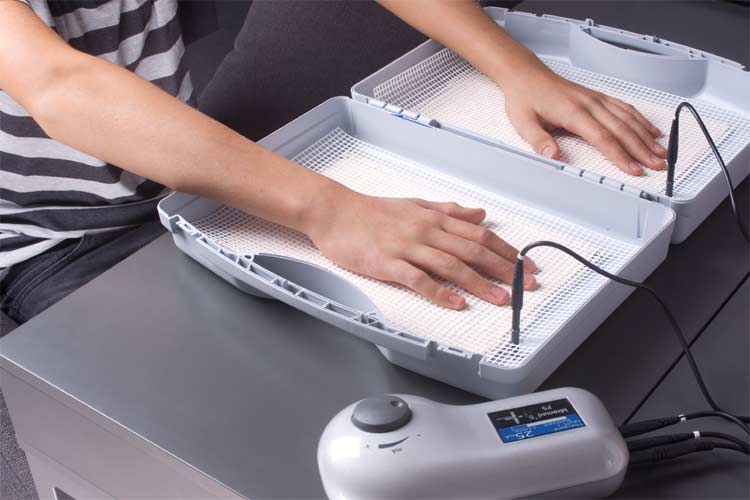
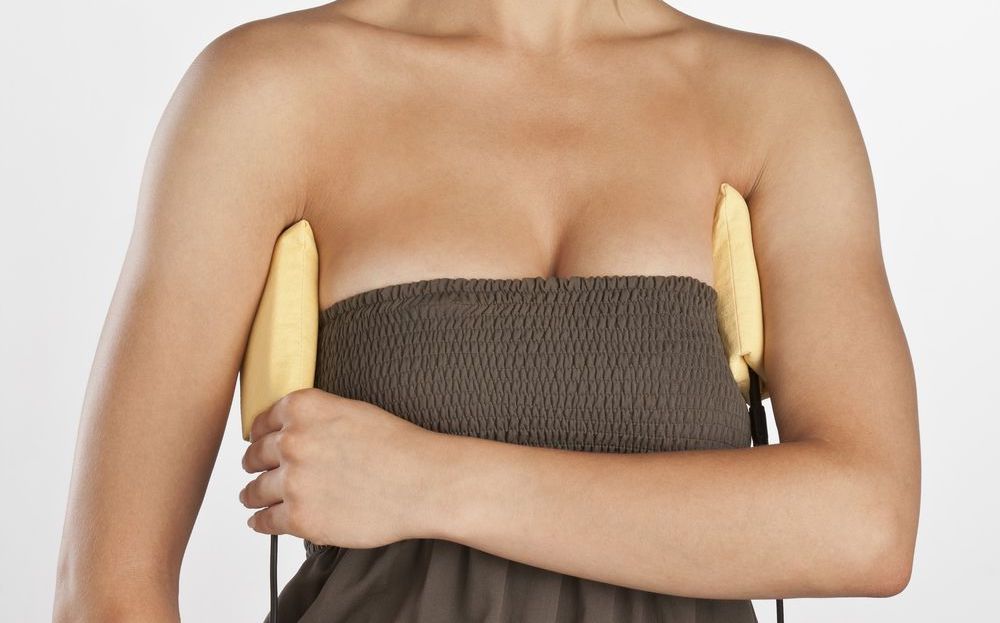
Alopecia areata is a form of autoimmune disorders affecting hair loss in any part of the body. Depending on the severity, our dermatologist will discuss the pros and cons of various treatments available, ranging from topical treatment, injections of steroid, and immunotherapy.
Everyone losses between 50-100 strands of hair a day. However if you notice thinning of your hair with receding hair line, please consult our dermatologist early. There are available effective treatment that caters for both men and women.
Treatments options available are:
1. Topical minoxidil
2. Other substitute botanical topical treatment
3. Oral supplements
4. Other Oral medications depending on your conditions
5. Low level laser therapy (LLLT)
Hirsutism means unwanted male-patterned hair in a women. This is a common occurrence in certain racial groups. Sometimes, hirsutism can be linked to an underlying medical condition such as polycystic ovarian syndrome.
Effective treatment options available are:
1. Topical treatment
2. Intense pulsed light – not recommended in dark-skinned individuals
3. Laser – Diode Laser
Nail abnormalities may be clues to an underlying skin or medical condition. Nail infections with fungus and bacteria are not uncommon.
Fungal nail infections are challenging to manage. Topical treatment can be tried but quite often oral anti-fungal is required.
If oral medications is not preferred, our dermatologist can discuss and perform nail surgery if necessary. Please consult our dermatologists if you have any concerns.
Keloids are raised overgrowths of scar tissue that occur at the site of a skin injury. Common places to develop keloid scars are your chest, back and jawline.
Individuals with dark skin and family history of keloid scars are more prone to developing keloid scars.
Prevention is very important. For instance, these individuals should seek medical treatment to treat their acne. Treatment for keloid scars is more challenging.
If your keloid scars are itchy or tender or continues to grow, it is best to consult a dermatologist.
1. Topical steroid
2. Injection of steroid locally
3. CO2 laser
4. Pulsed dye laser
Surgery to remove keloid scars is preferably not recommended as there is a risk of recurrence and your scar may be worse off.
Lumps and bumps on our skin can come in various forms and sizes. Fortunately, majority of lumps and bumps are innocent. However if you noticed any significant changes to them, please do not delay your visit to consult our dermatologist for further advice.
We can offer biopsy or excision and also histological analysis of the lesion, so that we can better advise you on further management, if any. If you require same day treatment, please inform our clinic staff at +65 6254 6646.
Common lumps and bumps are seborrheic keratosis, dermatofibroma, cherry angioma, pyogenic granuloma, syringoma, etc.
A “mole check” is one of the most common reasons to visit a dermatologist. Dermatologists are trained to examine and diagnose moles which look suspicious for cancers or other skin cancer.
Our dermatologist, Dr. Liew, was trained in various prestigious dermatology departments in the United Kingdom, including King’s College Hospital and Chelsea and Westminster Hospital in London. Therefore, Dr Liew possesses the experience and knowledge in diagnosing and managing skin cancers.
At your first visit, our dermatologist will conduct an assessment of your risk of developing abnormal moles or skin cancer.
Following this, a full skin examination is performed and for this you are required to undress to your undergarment. If you are concerned with any growths or moles in your genital or scalp, please inform our dermatologist.
We assess moles with specialized hand-held light devices, known as dermoscope to analyse your moles. If required, a digital dermatoscopic record of your mole can be recorded for future reference.
We also offer mole mapping if you have multiple, unusual looking moles or have a high risk of developing skin cancers. This is a specialised technique to capture digital photos of your moles while mapping your moles with the dermatoscope, which require close monitoring. These photos will be uploaded onto our electronic medical record for future reference. You can also request a copy of the mole map or photographs.
Mole mapping will benefit those with:
— Many moles (more than 50 to 100)
— Atypical or dysplastic nevi – moles that are large or of unusual color(s) or shapes
— Moles on the back, which may be difficult to keep an eye on
— Previous history of melanoma
— Strong family history of melanoma
— Moles and fair skin that have been severely sunburned
— Concerns about individual moles or freckles, eg, because of their appearance or recent change
If you think you need a mole mapping service or skin surgery, please inform our clinic staff at +65 6254 6646 so that we can allocate more time for your visit.
We may be able to provide this one stop mole check and treatment on the same day, unless you need to obtain approval from your insurance before we can proceed with the treatment if necessary.
Mole(s) removal is a medical procedure that can be performed either via laser, cauterization +/- shave excision or surgical excision. Moles are usually removed if there is a suspicion of skin cancer, however it can be removed for cosmetic reason.
This modality is only recommended for small flat moles, if there is no suspicion for skin cancer. Laser mole removal eliminates unwanted moles without damaging the surrounding skin cells. However, some of these pigmented skin cells may remain beneath the skin after laser and therefore there is a small risk of recurrence. Generally, laser mole removal is less likely to form scars as compared with other methods of mole removal. The treatment is minimally invasive and tends to heal well, with minimal downtime. Laser mole removal is ideal for cosmetic reason, in particularly on the face.
Cauterisation is the medical technique of using heat to burn off tissue. It is another popular method used for mole removal. A specialized cauterization tool will be used to apply heat to the surface of the mole, causing it to vaporise. For larger and protruding moles, shaving of the mole followed by cauterisation. However, some of these pigmented skin cells may remain beneath the skin after cauterisation and therefore there is a small risk of recurrence.
Surgical excision is the gold standard treatment for removing all types of moles, in particular, for moles that have changed and there is a strong suspicion for skin cancers. Local anesthetic is used to numb the area so any discomfort is minimised. With this method, the mole is cut out with a scalpel, along with a small amount of skin surrounding the area to ensure more of the pigment cells are removed entirely. Cutting out these moles usually require a few stitches, resulting in a small scar, which will improve with time. The excised mole will be sent away for histological analysis and the results will be discussed with you in clinic.
To learn more about mole removal, or to schedule your consultation with Dr Liew, please call us or fill in the form below.
Skin changes during pregnancy or just after pregnancy is not uncommon. The common physiological skin changes are stretchmarks, melasma (pigmentation on the face), hair & nail changes, and increased blood vessel – related skin growths, example pyogenic granuloma and spider naevi.
However there are other skin conditions which are specific to pregnancy, for example, atopic eruption of pregnancy (similar to eczema but these women may not have any history of skin allergies previously), pruritic urticarial papules and plaques of pregnancy (also known as PUPPP), and intrahepatic cholestasis of pregnancy, and pemphigoid gestationis.
Fortunately, the last 2 mentioned skin conditions are rare but can be severe and may impact your unborn babies. You may already have an existing skin condition, which can be exacerbated by your pregnancy, for example acne, rosacea, psoriasis, etc.
Our dermatologist Dr Liew, who was a consultant in KK Women’s and Children’s Hospital in Singapore has the knowledge and expertise in looking after pregnant women with skin conditions. She will assess your skin condition and arrange the necessary tests and discuss the best treatment options that are safe for you and your baby.
Dr Liew can also work closely with your obstetrician to best manage your skin conditions. She can also discuss the prevention measures to reduce your stretchmarks, pigmentation for example, and will offer the appropriate treatment subsequently after your pregnancy.
Psoriasis is a chronic skin condition, presenting with thick, inflamed and flaky skin. It is not contagious.
Psoriasis could occur on any part of the skin, usually the elbows, knees and back, sometimes affecting the nails, scalp and joints.
In Singapore, psoriasis is one of the top ten most commonly treated skin diseases, affecting 1-2% of the population. Itching is often experienced in our hot and humid climate.
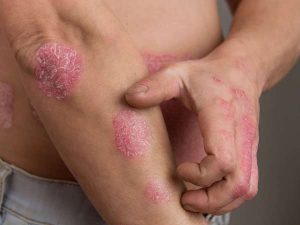
Our dermatologist, Dr Liew, will go through your medical history and examine your skin condition thoroughly before she discusses with you or your caregivers on the right treatment for your psoriasis. We want to help you improve your quality of life.
1. Topical management and nursing care
2. Oral immunosuppressant and monitoring
3. Biologics and monitoring
For mild psoriasis – Topical treatment with steroid and Vitamin D analogue will help to reduce the inflammation, thickness and the scales of the psoriatic rash.
For moderate to severe cases – Phototherapy, oral immunosuppressants or biologics can be considered. Research development in discovering various targeted immunological pathways in psoriasis have allowed development of many new biologics with good safety profile. In addition, majority of these biologics can help to improve psoriatic arthritis.
Dr. Liew has experience in initiating and monitoring immunosuppressants and biologic treatments.
When psoriatic skin is exposed to triggers, your overactive immune system sends out signals that cause inflammation in the body and speed up the growth cycle of skin cells. Instead of weeks, your skin cell cycle renews within days. Rapid growth of skin cells makes it difficult for the cells to be shed quickly enough.
Newly produced cells move to the outermost layer of the skin rapidly, finally building up at the skin surface as thick, scaly psoriatic patches. This causes psoriasis lesions, which are abnormal changes to the skin in the form of plaques, pustules or areas of redness and swelling.
Psoriasis may present differently in each person. It can develop slowly with mild symptoms or quickly with severe symptoms. It can occur on any part of the body.
Plaque psoriasis

Most common type of psoriasis. It causes dry red patches and silvery scales to your skin. These plaques can appear anywhere on your skin, but most often appear on your elbows, knees, scalp, and lower back. They can be painful, and sometimes crack and bleed.
Guttate psoriasis
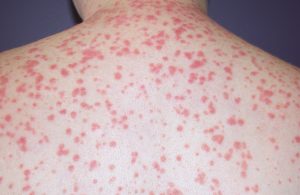
Common among children. It usually causes small pink spots, which commonly develop on the torso, arms, and legs. The spots caused by guttate psoriasis are rarely thick or raised like plaque psoriasis.
Pustular psoriasis

Characterised by pustules sometimes surrounded by reddened skin. Pustules are relatively large blisters of non-infectious pus, which consists of white blood cells. They are neither an infection nor contagious. Pustular psoriasis can appear on any part of your body, commonly on the hands and feet.
Inverse psoriasis
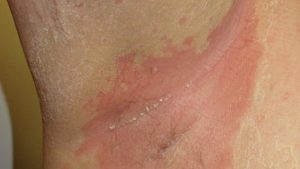
Characterised by smooth patches of red and inflamed skin which tend to worsen with sweating or friction. Inverse psoriasis affects areas of skin folds such as the underarms, under breasts, genital area and buttocks. Sometimes, fungal infection can trigger this type of psoriasis.
Erythrodermic psoriasis
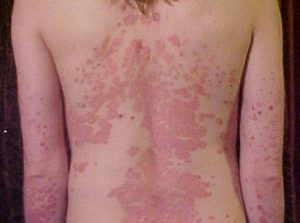
Rare but aggressive form of psoriasis. Erythrodermic psoriasis can cause intense redness and shedding of skin that nearly cover the whole body. In most cases, it is accompanied by intense pain, itching, inability to maintain proper body temperature, and a fast heartbeat. You should seek medical advice immediately if you think you are having an erythrodermic flare.
Nail Psoriasis
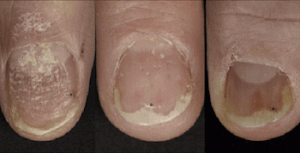
Many patients who have psoriasis also see see signs of the disease on their nails. Symptoms could include dents in your nails (nail pits), discolouration, thickened nails or nail lifting from its nail bed.
Psoriatic arthritis

5-15% of psoriasis patients develop arthritis (pain and swelling of the joints), commonly referred to as psoriatic arthritis. This condition causes inflammation and progressive damage to your joints, which could result in permanent deformities of the joints. Timely treatment is important in preventing worsening of condition.
Rosacea is a common chronic inflammatory skin condition, predominantly on the cheeks and nose among the middle aged person. It is usually mistaken for acne.
There are 2 components to rosacea: the inflamed bumps and the background of prominent red blood vessels. Therefore, patient will usually need 2 forms of treatments: medical and procedural.
Our dermatologist will be able to diagnose this condition and guide you on the right treatment.
Topical gels, Oral antibiotics, and various suitable treatment methods depending on your condition
1. Pulsed dye laser
2. Intense pulse light
Contact dermatitis is a kind of eczema that occurs when the skin comes into contact with a substance that you are allergic to.
The reaction is usually delayed and chronic. This is different from food allergy.
Contact dermatitis reaction is usually triggered by preservatives found in cosmeceutical products, fragrances, metals, clothing dyes, hair dyes, etc.
Our dermatologist, Dr Liew, will explore whether there is a possible trigger and will recommend patch testing to be done. Patch test to the common allergens as well as your own products can be arranged.
You will be required to visit our clinic 3 times in a week.
According to Skin Cancer Foundation Statistics, 1 in every 3 cancers diagnosed is a skin cancer. Fortunately, not all abnormal skin growths or moles are cancerous.
They could be pre-cancerous skin conditions such as dysplastic naevi, actinic keratosis, Bowen’s disease, or lentigo maligna, which has a small potential risk of transforming into skin cancers. Hence early detection and management of such pre-cancerous skin conditions is crucial in preventing skin cancers.
Fair skinned individuals who live in Singapore’s tropical climate are also at risk of developing skin cancers. Regular skin checks with a dermatologist is recommended.
— Basal cell carcinoma (most common)
— Squamous cell carcinoma
— Melanoma
There are other rare forms of skin cancers which Dr Liew will be able to assist with as well.
Our dermatologist, Dr. Liew, was trained in various prestigious dermatology departments in the United Kingdom, including King’s College Hospital and Chelsea and Westminster Hospital in London. Therefore, Dr Liew possesses the experience and knowledge in diagnosing and managing skin cancers.
If a skin cancer is suspected, Dr Liew will discuss with you on options such as a skin biopsy, skin surgery or even nail biopsy if there is a suspicious mole on your nail. If confirmed, she will discuss the treatment plan with you.
There is no “one-size-fits-all” approach to skin cancer treatment. The best treatment for you is a balance amongst these factors – treatment effectiveness, cosmetic outcome, comfort level and impact on your lifestyle.
Skin cancer can be treated medically or surgically. Depending on the type of cancers, the sites, and your general health condition, Dr Liew will discuss all the available options in our clinic, as well as those not within our line of services, because we want you to have the best treatment.
Our clinic offers a variety of topical and oral treatments that will be prescribed by Dr Liew after assessing your condition.
1. Liquid nitrogen cryotherapy
2. Curettage and electrodessication
3. Laser ablation
4. Excisional surgery – this remains the mainstay treatment for skin cancer
Presentation of bacterial infection on the skin is very common, ranging from impetigo, cysts/abscesses, folliculitis, etc. It is common amongst those with a history of eczema.
Management of infections depends on the clinical presentation, severity, sites and frequency. Our dermatologist will discuss the right management plans for you.
This is a common infection which can be challenging to manage.
Services that we provide are:
1. Topical treatment
2. Pairing and liquid nitrogen cryotherapy
3. Surgery – excision or shave & electrocautery
4. Carbon dioxide
Molluscum presents as solitary or multiple small lumps on the skin. In adults, In adults, it can be passed on through sexual contact.
Services that we provide are:
1. STI counselling and tests
2. Topical treatment
3. Liquid nitrogen cryotherapy
4. Skin curettage
5. Electrocautery
Fungal infections can be difficult to treat if it has been persistent or recurrent in nature. Our dermatologist will be able to perform investigations and advise you on the most suitable treatment for your skin infections.
Urticaria or hives are very common. They appear as itchy, pink-to-red swellings (wheals) that can occur on any part of the skin. They last from a few minutes to a few hours, and usually fade away within 24 hours leaving no trace. When hives occur around the eyes or lips, they can swell excessively (angioedema).
In most patients, urticaria goes away completely within a few days to a few weeks (acute urticaria).
Occasionally, some patients may continue to have urticaria for many months or years (chronic urticaria).
Majority of the time, no cause can be found. Common causes of urticarial are infections, foods, drugs, physical agents, and insect bites.
Our dermatologist, Dr Liew, will try to identify the possible trigger during consultation. Allergy testing with skin prick test or blood test can be arranged depending on your skin reaction.
If a cause is identified, this should be eliminated. Anti-histamines are the mainstay of treatment of urticaria. There are many different types of anti-histamines which can be tried.
Occasionally, oral steroid can be given if there is a severe flare to relieve the symptom immediately.
For more chronic severe urticarial, our dermatologist may recommend another form of treatment with immunosuppressant and biologic injection.
Vitiligo is an autoimmune disfiguring skin conditions that causes the skin pigment to disappear resulting in white patches of skin on any body site.
Our dermatologist will assess your skin conditions, arrange necessary investigations to rule out other underlying medical conditions, and discuss with you on the right treatment options.
Early treatment can halt the progression of vitiligo and may also encourage re-pigmentation. Treatment consists of topical management, oral medication may be required, as well as phototherapy.

If your cyst is tender and inflamed, it is advisable to take a course of oral antibiotics first before going for surgery to remove it, in order to shrink the cyst and hence smaller scar.
Occasionally steroid injection can help to shrink the inflamed cyst. However, if the cyst is large and extremely painful, it is advisable to have it removed under local anaesthesia or even general anaesthesia in our clinic or hospital theatre.
Read MoreQuite often, individuals who have cysts are those who have a history of acne and a family history of such skin conditions. Those who have multiple and recurrent cysts, usually in the skin folds such as the groin or armpits, could have this condition called hidradenitis supprativa.
Speak with your dermatologist if you feel you have this skin condition as there are treatments available.
Read MoreIf you have cysts forming in the background of acne, treating your acne may be helpful. Cystic acne is one of the severe form of acne and therefore oral medication is usually required to stop these cystic acne from forming leaving lumps and scars on your skin. Regular antiseptic wash may be helpful as well.
Read More
The inflammation caused by migration of white cells to the surface of the skin, due to broken skin barrier and exposure to the environmental triggers such as house dust mites, etc.
Read MoreNo it is not, unless the skin affected has infection caused by bacteria or virus.
Read MoreYes, it is the first line treatment for eczema flare. It is safe if used appropriately and under medical supervision. Steroid cream will help to alleviate the symptoms of itch by reducing the inflammation and improve skin barrier, in order to prevent skin infection, as well as improving quality of life. Thus, one can avoid taking oral antibiotics +/- oral steroid to heal the skin.
Read MoreDr. Liew and her team will provide skin counselling on management of eczema. She will counsel and advise on the use of a suitable emollient and topical steroid and other alternatives to help improve your skin condition. In addition, she can provide counselling for wet wrapping, especially in children. Skin prick test and allergy blood tests can be arranged in her clinic.
In severe cases, admission can be arranged if indicated. Dr. Liew can advise on second line treatment with immunosuppressants, or third line with the new biologic, dupilumab.
Read More
Quite often, excessive sweating will not improve and may sometimes worsen during puberty.
Read MoreSweaty palms are not uncommon. Options for sweaty palms are limited. Topical treatment with aluminium hydroxide will not stay on the skin long enough to have its effect.
Iontophoresis can be considered and tried out in Dr. Liew’s clinic. Iontophoresis involves soaking your hands in a tray of water with a low voltage electricity turned on for about 20-30 minutes. After around 4 sessions (twice weekly), you will start to notice the improvement. In such cases, this iontophoresis machine can be self bought to do it at home.
Biologic injection into the palms can be considered but it is quite a painful procedure and the effects may only lasts for about 6 months. Surgical procedure to de-nerve the spinal cord should not be considered due to its potential complications unless all the above methods are not effective.
Read MoreYes. For generalised body sweatiness, oral medication can be helpful. Safe and effective dose of these medications will be given to you depending on your response to the treatment.
Read More
Yes, it can be cured in most cases but the treatment duration can be very prolonged depends on the severity and the chronicity of the nail disease, and whether it is on the toe or finger nails.
Read MoreThere are many causes for fungal nails, e.g. wet work, sweaty feet, manicure. It is advisable to avoid manicure if they do not sterilize the equipment adequately. Sweaty feet can be managed with various methods.
Read MoreOral antifungal treatment is recommended for any form of fungal nail infections. Prior to starting oral antifungal, nail clippings should be sent off for fungal nail culture to determine the species type so that your dermatologist can advise on the right treatment for you.
Treatment duration ranges from several weeks to months. If oral antifungal is not favoured, topical treatment can be used but the treatment duration is usually 6 months or longer. If there are symptoms to the nails involved, nail avulsion followed by topical antifungal can be considered.
Read More
Generally a flat mole (known as junctional naevus) can be treated easily with electrocautery or ablative laser such as CO2 laser. The reason being the pigment cells are on the superficial layer of the skin.
For a raised mole, whether with brown pigment or not, it is recommended for them to be removed surgically as the pigment cells are deeply seated. This procedure is called skin excision, which can be done under local anaesthesia. Another method for removing a protruding mole is shave excision, where only the top layer of the mole is removed.
Ultimately, the choice of mole removal method depends on your preference and cost.
Read MoreIt is not easy to estimate the cost without first seeing the mole itself. Every method has its pros and cons and you need to be informed. Three factors for deciding on the method of mole removal are costs, size/shape of scar and the risks of recurrence.
Estimated costs for the removal of one mole are:
– Laser/electrocautery starts from $100
– Shave excision starts from $250
– Excision starts from $550
– Histological analysis of moles starts from $185. It is highly recommended for surgically removed moles.
Please inform the clinic if you are keen to have the surgery done on the same day, so that sufficient time is allocated for this procedure. It is ideal to shower before turning up.
Inform the doctor if you have any allergies or on any blood thinning medications. It is advisable to wear loose and comfortable clothing on that day. For surgery on the feet/toes, it is advisable to wear sandals or slippers. There is no need to fast as we will normally perform mole removal under local anaesthesia.
You need to be aware that it takes 7-14 days for the wound to heal and sutures to be removed (if required) before you make any travel arrangement or before any strenuous activities like a sports competition etc.
If you are unsure of your personal circumstances, please check with us. If you have insurance, we will be able to provide a medical memo and if approval from your insurance provider is required, it is likely that the procedure will not be carried out on the same day .
Read More
Psoriasis can be controlled, even though it is not curable. Dr. Liew will monitor your condition closely to prescribe a suitable treatment plan.
Unlike other chronic illnesses, it rarely shortens life expectancy. However, psoriasis can dramatically affect your quality of life through physical, social or emotional discomfort. We focus on helping you improve your quality of life.
Read MorePsoriasis triggers are not universal. What triggers psoriasis in one person may not affect another.
Some possible triggers include:

Skin prick test is a form of allergy test to confirm or rule out a suspected food or environmental allergies, such as eggs, milk, peanuts, wheat, soya, shellfish, house dust mites, pets danders etc. This test can be done on a clean surface without rash, usually on the back on a child or forearms on an adult. The results will be available in 20 mins.
This test is generally well tolerated even in young children. We advise not to take this test if you have been unwell or on any antihistamines a week prior, or if you have a history of anaphylaxis to the suspected food. Dr. Liew’s clinic can perform skin prick tests to common food.
Read MorePatch test is performed to confirm or rule out suspected contactants in those who experience persistent recurrent eczema. Patches of these common allergens such as preservatives in creams, steroid, hair dye, metals, fragrances as well as your suspected topical products.
This test usually lasts for 5 days. You need to be aware that shower is not allowed on Day 4 of the test, and avoid exercise during the 5 days. Dr. Liew’s clinic can arrange for this test to be done in hospital and results will be ready on Day 5.
Read MoreThis test looks at your allergy antibodies known as IgE to certain allergens. This test involves drawing blood with needle. There is a wide range of allergens that can be tested but they are generally quite costly as well.
This can be performed if you suffer from anaphylaxis or to confirm the allergy if your skin prick test is positive, or you have a wide variety of suspected food allergies. Dr. Liew can arrange this test in her clinic. The results will usually be ready after a week.
Read More

Dr. Liew Hui Min is an accredited consultant dermatologist from the Ministry of Health and the General Medical Council UK. Her clinical interest includes paediatric dermatology, women’s dermatology and general adult dermatology. Having trained in major London Hospitals, Dr Liew returned to Singapore in 2014 as a Consultant at KK Women’s and Children’s Hospital (KKH) where she specialised in paediatric, women, obstetric and vulva dermatology. Currently, Dr Liew practices at SOG – HM Liew Skin & Laser Clinic located at Gleneagles Hospital.
Learn MoreDr Liew and Team does everything to make you feel comfortable and taken care of.
Dr Liew Hui Min is dually accredited with the Ministry of Health and the General Medical Council (UK) as a dermatologist.
Come visit our clinics, which are equipped with modern and updated dermatology equipment, and a team that will take care of all your needs.
Get the care you deserve, and know how much you’re paying for our services upfront. We offer fair and transparent pricing. Speak to us to find out more.
Aftercare is an important aspect of treatment, expect a consistent quality of care from our team to ensure your well being.
Gleneagles Medical Centre
6 Napier Road, #06-01
Singapore 258499
Clinic Hours:
Monday, Tuesday, Thursday & Friday
8am to 1pm
2pm to 5pm
Wednesday and Saturday
8am to 12pm
Contact Information
T: +65 6254 6646
F: +65 6259 9853